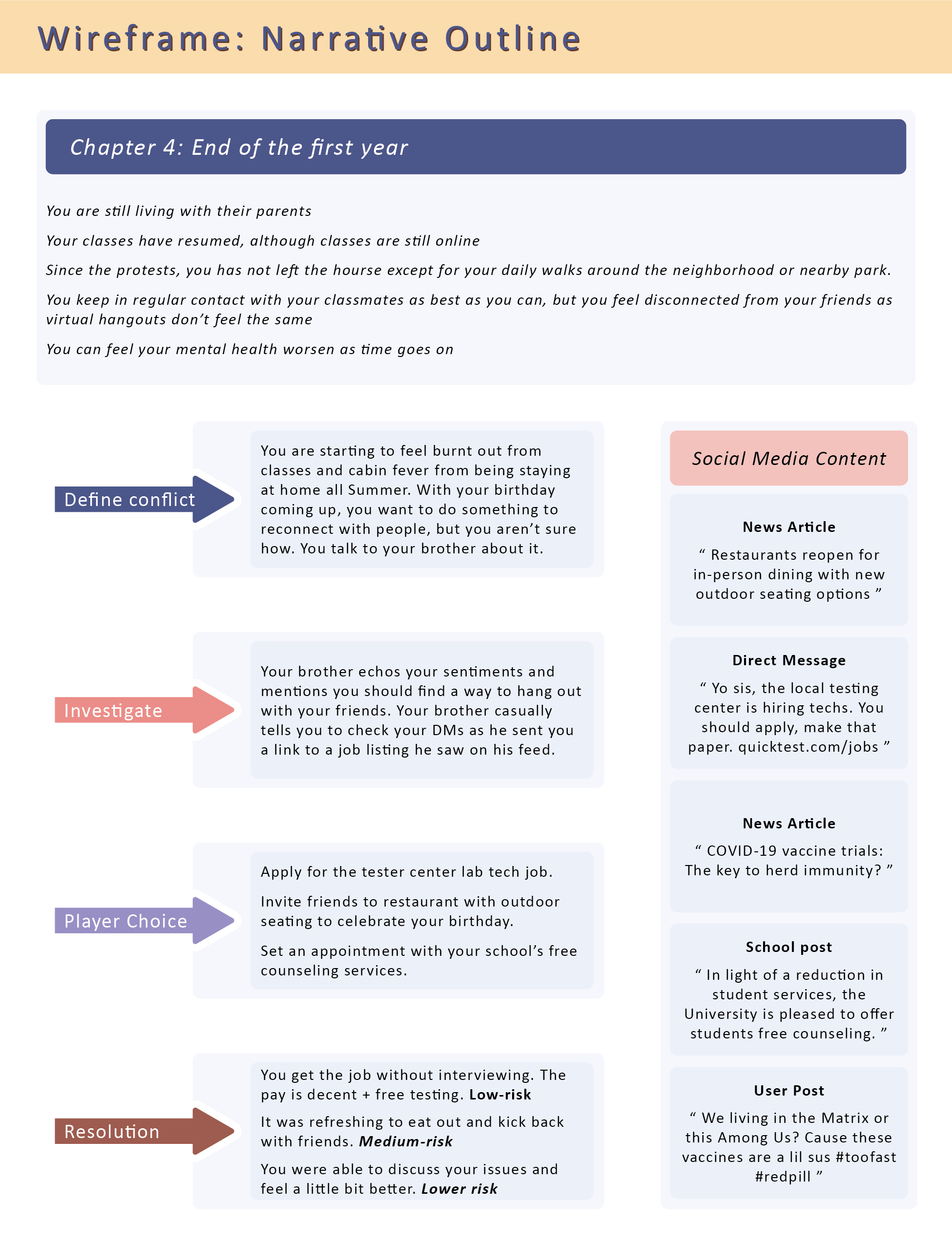
A Case Study on the Inclusion of Narratives in a Serious Game about Vaccine Hesitancy
The dream team.
The project.
-
Young, African American adults represent one of the most at-risk demographics for COVID-19-related mortality, while also being the most vaccine hesitant. Storytelling has been shown to positively guide health decision making in at-risk populations. Yet adequate and equitable representation of people of color within medical visualization and health communication remains a continued challenge that in part perpetuates healthcare disparities. Additionally, narrative use remains poorly understood in the context of serious games and remains a challenge to narrative-based interventions for populations of color.
-
How can narratives be collected and implemented into a serious game touching on vaccine hesitancy?
-
This study aims to develop a pipeline for the collection and integration of the target demographic’s narratives to address misconceptions on the development of Covid-19 vaccines, and will serve as the proof-of-concept for addressing similar healthcare and communication disparities.
The literature review.
Vaccine hesitancy
Vaccine hesitancy, or the delay/refusal to accept a vaccine, is a complex issue grounded in factors involving personal health beliefs. Information inaccessibility is a considerable contributor to vaccine hesitancy across all demographics. However, distrust in the government, medical professions, and the healthcare system at large due to historical and existing inequalities in healthcare remain as major contributors to vaccine hesitancy amongst Black Americans (Young, 2021).
Trustworthy resources
Distrust in the healthcare system underscores a need for reliable sources of information adjacent to political and healthcare realms. There is a growing body of research recognizing the importance of culture in healthcare decision making and viable clinical intervention strategies to work within a target population’s culture (Airhihenbuwa et al., 2020).
Narrative-based interventions
Narrative-based interventions have long been recognized as an effective health communication strategy (Liehr & Smith, 2020), and has been applied in the clinical setting to address health communication disparities (Lee et al., 2016). Story theory posits that individuals can engage in health knowledge development through storytelling and has been applied to nurse-patient relationships as a tool for facilitating patient understanding of their health challenges (Lee et al., 2016).
The project overview.
The game design document.
User Interface
Wireframe showing the user interface and general flow of user interaction. Interactions are generalized for rapid prototyping.
Narrative Structure
Diagram of narrative structure and case examples of narrative flow. This informs the overall organization of the narrative game.
Style Guide
Summary of color pallets, text styling, and art style. This guide informs the look and feel of the narrative game.
The narrative collection
Recruitment
Flyers and recruitment emails were distributed amongst Chicago universities and health clinics to recruit Black participants between the ages of 18 - 29. Participants could freely choose an interview slot that worked for them.
Interview
Respondents are pre-screened for qualifying conditions, walked-through the informed consent process, and then interviewed with a series of open-ended questions related to the COVID-19 Pandemic.
Analysis
Common themes are grouped together, and emerging health-related content are categorized using the Health Beliefs and PEN-3 Models for health decision making.
The narrative outline
The deliverable.
Check out some demo footage from a work in progress build of the game.
Audience: Lay audience, young adult.
Platform: Web-based, mobile ready applet (Twine).
Software: Adobe Illustrator, Twine (Twinery), Visual Basic Code (HTML/CSS), Procreate









